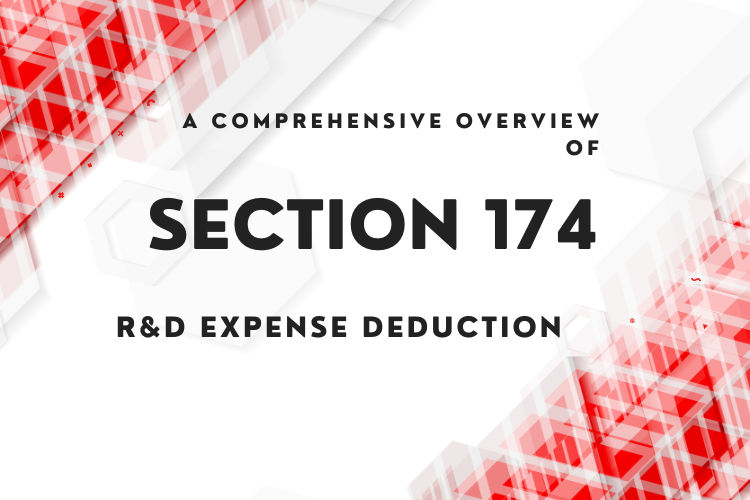Section 174 of the Internal Revenue Code shapes how businesses handle their research and development (R&D) expenses. This provision encourages innovation by allowing companies to deduct R&D costs from their taxable income.
However, recent changes to the law have introduced new requirements that businesses must understand to maximize their tax benefits.
What Does Section 174 Cover?
In the past, businesses could deduct research and development (R&D) expenses completely in the same year they were incurred. This immediate deduction provided a significant cash flow benefit, allowing companies to reinvest in their innovation efforts.
For tax years starting after December 31, 2021, the Tax Cuts and Jobs Act (TCJA) changed everything.
Under the new rules, businesses must capitalize and amortize R&D expenses over five years. This means that companies must spread the deduction over several years instead of taking a full deduction in the year the expenses are incurred.
This change helps taxes match the long-term nature of R&D investments since the benefits of these costs usually last longer than one tax year.
What Expenses Are Eligible?

Section 174 covers a broad range of expenses related to R&D activities. Eligible costs include:
1. Wages for employees involved in R&D.
2. Supplies used in R&D processes.
3. Contract research expenses are paid to third parties.
4. Costs associated with developing prototypes and models.
Businesses must maintain detailed records of these expenses to ensure compliance and maximize deductions.
Impact on Businesses

The transition to amortization, as outlined in Section 174, can have substantial consequences for businesses, especially for startups and those with substantial investments in research and development.
While the immediate cash flow benefits of full deductions are diminished, the long-term nature of amortization may provide a more stable tax treatment over time.
Additionally, businesses can still take advantage of the R&D tax credit, which allows for a dollar-for-dollar reduction in tax liability based on eligible R&D expenditures.
The credit can be claimed in the same year that the expenses are incurred, which provides an immediate benefit, even though the underlying costs need to be amortized.
Conclusion
Understanding Section 174 is essential for businesses engaged in R&D activities. The recent changes to the treatment of R&D expenses require careful planning and record-keeping to ensure compliance and maximize tax benefits.
Companies can effectively manage tax obligations and sustain investment in innovation by capitalizing and amortizing research and development (R&D) expenses and taking advantage of the R&D tax credit.
Talking to a tax professional is highly suggested for businesses that want to get the most out of their tax strategy. They can provide guidance tailored to your specific situation, helping you make the most of the provisions under Section 174.

